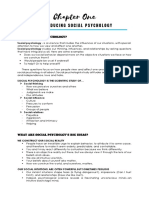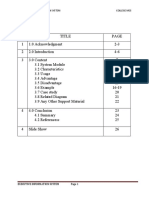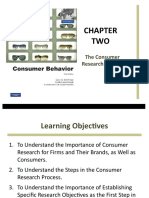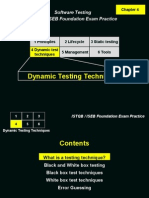0 ratings0% found this document useful (0 votes)
142 viewsHR Audit-1
HR Audit-1
Uploaded by
Shreya VermaThe document discusses human resource (HR) audits. It defines an HR audit as a method to comprehensively review HR policies, procedures, documentation, and systems to identify areas for improvement and ensure compliance. The scope of an HR audit includes evaluating HR practices and professionals against desired standards, organizational strategy/goals, and laws/regulations. HR audits are systematic processes to examine HR strategies, procedures, documentation, structures, systems, and practices.
Copyright:
© All Rights Reserved
Available Formats
Download as PPTX, PDF, TXT or read online from Scribd
HR Audit-1
HR Audit-1
Uploaded by
Shreya Verma0 ratings0% found this document useful (0 votes)
142 views24 pagesThe document discusses human resource (HR) audits. It defines an HR audit as a method to comprehensively review HR policies, procedures, documentation, and systems to identify areas for improvement and ensure compliance. The scope of an HR audit includes evaluating HR practices and professionals against desired standards, organizational strategy/goals, and laws/regulations. HR audits are systematic processes to examine HR strategies, procedures, documentation, structures, systems, and practices.
Original Description:
Hr audit
Copyright
© © All Rights Reserved
Available Formats
PPTX, PDF, TXT or read online from Scribd
Share this document
Did you find this document useful?
Is this content inappropriate?
The document discusses human resource (HR) audits. It defines an HR audit as a method to comprehensively review HR policies, procedures, documentation, and systems to identify areas for improvement and ensure compliance. The scope of an HR audit includes evaluating HR practices and professionals against desired standards, organizational strategy/goals, and laws/regulations. HR audits are systematic processes to examine HR strategies, procedures, documentation, structures, systems, and practices.
Copyright:
© All Rights Reserved
Available Formats
Download as PPTX, PDF, TXT or read online from Scribd
Download as pptx, pdf, or txt
0 ratings0% found this document useful (0 votes)
142 views24 pagesHR Audit-1
HR Audit-1
Uploaded by
Shreya VermaThe document discusses human resource (HR) audits. It defines an HR audit as a method to comprehensively review HR policies, procedures, documentation, and systems to identify areas for improvement and ensure compliance. The scope of an HR audit includes evaluating HR practices and professionals against desired standards, organizational strategy/goals, and laws/regulations. HR audits are systematic processes to examine HR strategies, procedures, documentation, structures, systems, and practices.
Copyright:
© All Rights Reserved
Available Formats
Download as PPTX, PDF, TXT or read online from Scribd
Download as pptx, pdf, or txt
You are on page 1of 24
At a glance
Powered by AI
The key takeaways are that an HR audit is a comprehensive review of HR policies, procedures, documentation and systems to identify areas for improvement and ensure compliance. It examines the HR function, policies, professionals and department.
HR audits are conducted to make the HR function more business driven, take stock and improve HR strategies, promote professionalism, identify reasons for lower productivity, enable growth and diversification, address dissatisfaction and enable a change in leadership.
An HR audit typically evaluates the organization's structure, strategies, systems, styles, skills/competencies, culture and their appropriateness in achieving short and long term goals.
Definition - A HR audit is a comprehensive method
to review current HR policies, procedures,
documentation and systems to identify needs for
improvement and enhancement of the HR function
as well as to assess compliances with ever changing
rules and regulations.
Scope – Covers HR Policies & Practices, HR
Professionals and the HR Dept.
◦ The actual state
◦ The congruence between the desired state and actual state
◦ The alignment with the overall org strategy and goals
◦ The compliance with the laws and regulations
The word audit is derived from the latin verb Audire,
which means, to listen. Listening implies an attempt
to know the state of the affairs as they exist and as
they are expected to exist.
Like any audit, HR audit is also a systematic formal
process, which is designed to examine the strategies,
procedures, documentations, structures, systems
and practices with respect to the org’s HRM.
To make HR function business driven
To take stock of things and to improve HRD for expanding,
diversifying and entering into a fast-growth phase
For promoting professionalism among employees and to
switch over to professional management
MNC’s want to know the reasons for lower labour
productivity and for improving their HRD strategies in the
Indian context
For growth and diversification
Dissatisfaction with a particular component
Change of leadership
For effective talent utilization, retention and development
and intellectual capital building
Basic purpose of HR-Audit is to find:
Effectiveness: To review performance of Human resource Dept. and its activities
to determine effectiveness.
Implementation: To locate gaps, lapses, failings in applying Polices, Procedures,
Practices & HR-directives.
Rectification: To take corrective steps to rectify mistakes.
Evaluation: To evaluate HR Staff & employees.
Modify: To review HR System and Modify to meet challenges in comparison with
other organizations.
Questioning: To seek answers to ‘What happened’? ‘Why did it happen’? ‘Why did
it not happen’?
Legal compliance
Compensation/Salary Administration
Employment/Recruiting
Orientation
Terminations
Training and Development
Employee Relations
Files/Record Maintenance/Technology
Policies and procedures (including employee handbook)
Compliance-Employee compensation records, payroll files, job
descriptions and work logs are helpful in an HR audit to determine
alignment between nondiscriminatory employment practices and
compensation policies and current laws and industry practices.
Workplace Policy Review-Annual reviews of employee handbooks,
standard operating procedures and workplace postings ensure
employers’ rules are consistent with labor and employment laws.
HR Processes-Auditing human resources processes reveals whether
a company is operating in as efficient a manner as possible. Human
resources staff qualifications and expertise are often part of an
audit to assess the strength and capabilities of the department.
Quality Management - HR audits that assess the quality of
work performed by outside providers enable better decision-
making related to retaining the services of that provider or
creating ways to improve the quality of employee services
performed in-house.
Due Diligence-The purpose of an HR audit for due diligence
inspection facilitates a seamless transition for employment
processes during mergers and acquisitions. Records review
and examination of HR files can uncover issues that must be
resolved before finalizing a merger transaction. This type of
audit also may highlight potential liability for previous
employment actions and give acquiring companies a heads-
up on future expenses for legal representation concerning
past practices.
The HR audit champions are members of staff expected to
contribute to the process. They do not have to have management
responsibilities. These champions are early adopters and advocates
for the project who want the audit to succeed and believe that
carrying out this process will be beneficial to the organisation.
They understand the purpose and relevance of the project for them
and the organisation. The project manager must be clear and
manage expectations throughout. It must be clearly established at
the start of the project that they can commit the time necessary to
be a champion. The champions’ involvement and enthusiasm must
also be recognised as appropriate.
How to choose HR audit champions
◦ Should be a member of staff, volunteer or board member;
◦ Usually drawn from department(s) being audited;
◦ Can demonstrate commitment to the process (essential);
◦ Need to be given the time and recognition by management
to undertake the role.
Build commitment through effective
communication: Develop and maintain a
communication plan to ensure that expectations of
the project remain in line with reality. Creating a
framework of objective; strategy; by whom; by
when, might be useful.
Acknowledge and manage resistance. Recognise
and manage any resistance to the technology and
new or changed business processes associated
with the project needs.
Build synergy through teamwork. Synergy is
developed to create an atmosphere that allows
individuals from different backgrounds and with
diverse skills, experience, needs and aspirations to
work together. Ensure that the champions are active in
any training and follow-up activities.
Equip the champions. Ensure that the necessary
resources and support are available throughout the
whole duration of the HR audit process.
Encourage ownership. Ensure that the HR audit
champion accepts ultimate responsibility for its
successful implementation.
The following approaches are adopted for purpose
of evaluation:
Comparative approach
Outside authority approach
Statistical approach
Compliance approach
Management by objectives (MBO) approach
In this, the auditors identify Competitor Company as the
model. The results of their organization are compared with
that Company/ industry.
In this approach, a benchmarking strategy is used. Auditors
identify a competitor organization which is used as a model
in comparison. The audit reports are compared analytically to
find areas to make corrections.
The benchmarking process is quite tedious as it involves;
Forming a team to take care of the process.
Identifying the most suitable organization to partner for the
benchmarking.
Collection of data from both organization/companies.
Proper analyzing and interpretation of the data.
Creating an action plan and working on loopholes identified.
Standards set by outside consultants are used by the
audit team to benchmark for comparison with their
own results. Data from published research finding
and research films/ documentaries are also a source
for benchmarking, to explore for causes of the
problem.
Statistical Approach is also known as a quantitative and
qualitative approach. This method uses statistical tools
and information recorded in the organization’s system.
The recorded information may include employee
turnover and absenteeism. The checking and auditing of
employees involve complex mathematical formulas
which form a standard on which all activities and
programs are examined.
With the mathematical data as a base, mistakes can be
discovered and corrected from an early point. Other
times statistical approach is supplemented with records
from different sources such as films and surveys.
It is an approach based on legal and organization’s
policies. Auditors take a thorough look at past
actions to examine whether the organization’s
activities are in line with legal requirements
together with the set standards, policies and
procedures. Although many don’t view it as an
efficient approach because it uses past information
which may be biased due to various reasons.
This is a goal and objective-based approach. Specific
targets are laid down against which the
organization’s performance is measured so as to
arrive at a final decision. The Audit team conducts a
survey of the actual performance then compares
that performance with the desired objectives of the
organization.
It is noted that irrespective of the approach, it can be
grouped as a comprehensive plan or special focused
plan, with staff, time and costs as factors.
In this method, the HR evaluates not only the financial performance
of the organization but also takes into the consideration the key
performance indicators of customer service, internal business
process and learning & growth achieved by the organization.
The four dimensions that make the balanced scorecard are:
Financial Dimension: The management can determine the long
term and short term financial performance of the organization that
results from the actions undertaken by the management during the
financial year.
Customer Service: Through this dimension, the management tries
to find out the perception of customers towards the organization
and also the customer retention and satisfaction levels.
Business Process: Under this, the management evaluates the
efficiency of the production processes in terms of, how well
the order was processed, when the delivery was made, and
what was the cost incurred per order.
Learning and Growth: This dimension talks about if any
new technology or novice product introduced in the
organization, the customer retention and the efficiency of
training programs conducted for the personnel. It focuses on
how well the organization’s resources were utilized; that
results in the overall growth of the organization.
Earlier, the evaluation tools just focused on the financial
performance of the organization through its past records, but
with the balanced scorecard, the organizations can keep a
track of past as well as forecast the future performance of its
operations.
Arthur Anderson
◦ five stages----
◦ 1. The clarification stage : firm focus on impact of mgt’s
philosophy on human capital
◦ 2. The assessment stage: calculates the cost of investment
on human capital
◦ 3.The design stage: creates prg that yield better returns on
human capital
◦ 4. The implementation stage: proposed changes into
practice
◦ 5. The monitoring stage: check new system against strategy
Identification of the contributions of the HR department
to the Organisation.
Encourages greater responsibility and professionalism
among members of the HR department.
Clarifies HR department’s duties and responsibilities.
Creation of increased acceptance of the necessary
changes in the HR department.
Activities
Behaviors
Risk Assessment
Internal Controls
Outcomes
HR Audit is comprehensive evaluation of following
Structure
Strategies
Systems
Styles
Skills/Competencies
Culture(Shared Values)
◦ And their appropriateness in achieving short-term & long-
term goals.
You might also like
- Sample Business Process Worksheet TemplateDocument12 pagesSample Business Process Worksheet Templateapi-3697386100% (1)
- Trends in Business Process ManagementDocument15 pagesTrends in Business Process ManagementStudie Vereniging VRiSBI100% (7)
- 7.9.6 HR Analytics Product Guide v.4Document297 pages7.9.6 HR Analytics Product Guide v.4Bhaskar SrikanthNo ratings yet
- Micro Finance PolicyDocument85 pagesMicro Finance PolicyBelkis RiahiNo ratings yet
- Psy10 Chapter 1 OutlineDocument8 pagesPsy10 Chapter 1 OutlineJuliet Anne Buangin Alo100% (1)
- Apma 3100 Practice Exam 1Document7 pagesApma 3100 Practice Exam 1Jose CrawfordNo ratings yet
- Project HR AuditDocument8 pagesProject HR AuditSmita AvhadNo ratings yet
- Risk Appetite Best Practice A Complete Guide - 2020 EditionFrom EverandRisk Appetite Best Practice A Complete Guide - 2020 EditionNo ratings yet
- Subsidiary Management: A Guide For The Corporate SecretaryDocument62 pagesSubsidiary Management: A Guide For The Corporate Secretaryaryssaiman5711No ratings yet
- HR Process MapDocument3 pagesHR Process Mapleamalaga030% (1)
- ARC 13 2903 TeamMate AM Overview Brochure (WEB)Document28 pagesARC 13 2903 TeamMate AM Overview Brochure (WEB)Abdelilah CherkaouiNo ratings yet
- Implementing Microsoft Dynamics 365 Business Central On-Premise: Explore the capabilities of Dynamics NAV 2018 and Dynamics 365 Business Central and implement them efficiently, 4th EditionFrom EverandImplementing Microsoft Dynamics 365 Business Central On-Premise: Explore the capabilities of Dynamics NAV 2018 and Dynamics 365 Business Central and implement them efficiently, 4th EditionNo ratings yet
- HR AuditDocument8 pagesHR AuditSridevi RamamurthyNo ratings yet
- HRM - Role and Organization of The HR FunctionDocument10 pagesHRM - Role and Organization of The HR Functioncons theNo ratings yet
- BPM AssignmentDocument31 pagesBPM AssignmentTanmay Mehta50% (2)
- Enhancing 360-Degree Feedback for Senior Executives: How to Maximize the Benefits and Minimize the RisksFrom EverandEnhancing 360-Degree Feedback for Senior Executives: How to Maximize the Benefits and Minimize the RisksRating: 1 out of 5 stars1/5 (1)
- 10 Secrets To An Effective Performance ReviewDocument5 pages10 Secrets To An Effective Performance ReviewSwapnashree DasNo ratings yet
- AuditingDocument81 pagesAuditingAnkit KumarNo ratings yet
- Balanced ScorecardDocument9 pagesBalanced ScorecardSonali SinhaNo ratings yet
- Sample Paper (KPMG)Document12 pagesSample Paper (KPMG)Amina100% (1)
- Mckinsey Reports 2016Document79 pagesMckinsey Reports 2016sandeep patialNo ratings yet
- IT G C U: Overnance at Arleton NiversityDocument12 pagesIT G C U: Overnance at Arleton Niversityamjedns21531No ratings yet
- Human Resource Management Final Diversity CaseDocument21 pagesHuman Resource Management Final Diversity Caseapi-281092679No ratings yet
- The Five Traps of Performance ManagementDocument3 pagesThe Five Traps of Performance ManagementAditi AggarwalNo ratings yet
- Executive Information SystemDocument28 pagesExecutive Information SystemAdi Nur100% (1)
- Final Project Report: Paf Karachi Institute of Economics and TechnologyDocument33 pagesFinal Project Report: Paf Karachi Institute of Economics and Technologyfyp 2019No ratings yet
- Poter 5 Force ModelDocument6 pagesPoter 5 Force ModelAbhijit RoyNo ratings yet
- 3rd HR Excellence SummitDocument13 pages3rd HR Excellence SummitUjjval JainNo ratings yet
- Balance Scorecard: Nadiatul Qalbi Amalia RizqiDocument9 pagesBalance Scorecard: Nadiatul Qalbi Amalia Rizqinadxco 1711No ratings yet
- Clear Expectations: Restricted - © Siemens 2020 - HR GROWTH TALKS - December 2020Document13 pagesClear Expectations: Restricted - © Siemens 2020 - HR GROWTH TALKS - December 2020ayoub belaidiNo ratings yet
- Reading - Business Process ModelingDocument21 pagesReading - Business Process ModelingMarco PainhoNo ratings yet
- Achieving High Performance With Procurement Shared Services CentersDocument12 pagesAchieving High Performance With Procurement Shared Services CentersCharles BinuNo ratings yet
- John Sullivan - Top 15 Design Principles For Talent Metrics and AnalyticsDocument3 pagesJohn Sullivan - Top 15 Design Principles For Talent Metrics and AnalyticsAzwinNo ratings yet
- Business Process Performance MeasurementDocument31 pagesBusiness Process Performance MeasurementShivkarVishalNo ratings yet
- HRM PPT FinalDocument9 pagesHRM PPT FinalKowshik SNo ratings yet
- E. Bryan - Records Management For Human Resource Management (RM4HRM)Document6 pagesE. Bryan - Records Management For Human Resource Management (RM4HRM)Emerson O. St. G. BryanNo ratings yet
- Business Process Re Engineering 1Document13 pagesBusiness Process Re Engineering 1amitgupt82No ratings yet
- Data Protection Audit Manual - (173p)Document173 pagesData Protection Audit Manual - (173p)Rodrigo BenaventeNo ratings yet
- Director of Internal Audit Job DescriptionDocument3 pagesDirector of Internal Audit Job DescriptionozlemNo ratings yet
- Warehouse Management SystemDocument2 pagesWarehouse Management SystemAnkur PandeyNo ratings yet
- Perf ReportingDocument19 pagesPerf Reportingjohn labuNo ratings yet
- Changing Role of HR: Ashutosh Pandey Ashish Sharma Ashutosh Singh Avantika Tyagi Bineet Kumar Bhagwati Prasad GuptaDocument24 pagesChanging Role of HR: Ashutosh Pandey Ashish Sharma Ashutosh Singh Avantika Tyagi Bineet Kumar Bhagwati Prasad GuptaRahul GaurNo ratings yet
- Sawyer'S: ExcerptDocument12 pagesSawyer'S: Excerptrakhasurya50% (2)
- Intro CM Part 2 TrainingDocument51 pagesIntro CM Part 2 TrainingSara-QMNo ratings yet
- Information Technology OutsourcingDocument13 pagesInformation Technology OutsourcingAshim SainiNo ratings yet
- Handbook of Information Security Management - Access ControlDocument3 pagesHandbook of Information Security Management - Access ControlNaveen KumarNo ratings yet
- Why HR Governance MattersDocument7 pagesWhy HR Governance MattersShraddha ChhapoliaNo ratings yet
- Continuous Audit-Retail BankingDocument24 pagesContinuous Audit-Retail BankingtharushiNo ratings yet
- Implementing A Succession SystemDocument6 pagesImplementing A Succession SystemMrGaurangpatelNo ratings yet
- Erp Life Cycle Phases Final PresentationDocument24 pagesErp Life Cycle Phases Final PresentationSyed Bilal MahmoodNo ratings yet
- Purpose To Ensure Replacements For Key Job Incumbents in Executive, Management, Technical, andDocument2 pagesPurpose To Ensure Replacements For Key Job Incumbents in Executive, Management, Technical, andezekielbidesNo ratings yet
- CIPD Assesment UNIT 2 ADocument17 pagesCIPD Assesment UNIT 2 Awsk-the-cureNo ratings yet
- A Sustainability Overview of The Best Practices in The Airport SectorDocument17 pagesA Sustainability Overview of The Best Practices in The Airport SectorTiciano Costa JordãoNo ratings yet
- HR Audit Materials 179Document6 pagesHR Audit Materials 179amit3125No ratings yet
- Human Resources and PayrollDocument7 pagesHuman Resources and PayrollMichaela Russell RamosNo ratings yet
- Corporate StrategyDocument50 pagesCorporate StrategyShreya Verma100% (1)
- Porter's 5forces ModelDocument13 pagesPorter's 5forces ModelShreya VermaNo ratings yet
- Presentation On Strategy Control and Operational ControlDocument35 pagesPresentation On Strategy Control and Operational ControlShreya VermaNo ratings yet
- Human Resource Management Multiple Choice Questions With AnswersDocument10 pagesHuman Resource Management Multiple Choice Questions With AnswersAnand Sahu67% (6)
- Shreya VermaDocument3 pagesShreya VermaShreya VermaNo ratings yet
- FileHandler PDFDocument1 pageFileHandler PDFShreya VermaNo ratings yet
- University Grant Commission-National Eligibility Test (UGC-NET) - June 2019Document1 pageUniversity Grant Commission-National Eligibility Test (UGC-NET) - June 2019Shreya VermaNo ratings yet
- PCCM 20181223125545 PDFDocument107 pagesPCCM 20181223125545 PDFShreya VermaNo ratings yet
- Compiled By: Sanjeev KR Das Corporate Head-HR ETA Engg LTDDocument27 pagesCompiled By: Sanjeev KR Das Corporate Head-HR ETA Engg LTDShreya VermaNo ratings yet
- Chapter 1: IntroductionDocument51 pagesChapter 1: IntroductionShreya Verma100% (1)
- Motivation Techniques: Name: Binita Mahato Roll No: 33 Div: CDocument29 pagesMotivation Techniques: Name: Binita Mahato Roll No: 33 Div: CShreya VermaNo ratings yet
- HRD AuditDocument18 pagesHRD AuditShreya VermaNo ratings yet
- Continuous AssessmentDocument25 pagesContinuous AssessmentshubhangidhagatNo ratings yet
- UntitledDocument8 pagesUntitledMark PalasanNo ratings yet
- The Nature of MarketingDocument36 pagesThe Nature of MarketingAhmed MunawarNo ratings yet
- Trapezoidal RuleDocument4 pagesTrapezoidal Ruleapi-150547803No ratings yet
- Session 3 - Logistic RegressionDocument28 pagesSession 3 - Logistic RegressionNausheen Fatima50% (2)
- MISDocument45 pagesMISAndrew StephenNo ratings yet
- Psychometric Tests1 PDFDocument2 pagesPsychometric Tests1 PDFAnca-Andreea HrițuleacNo ratings yet
- Adigrat UniversityDocument8 pagesAdigrat UniversityEsrayel TamiruNo ratings yet
- Lesson 2 Parts-of-Research-Paper-FinalDocument71 pagesLesson 2 Parts-of-Research-Paper-FinalDaniela BadionNo ratings yet
- Schiffman CB10 PPT 02Document35 pagesSchiffman CB10 PPT 02CATAMPATAN, CLARICE P.No ratings yet
- Statistical Techniques in HealthcareDocument13 pagesStatistical Techniques in HealthcareRuchir ShardaNo ratings yet
- ISTQBCH4Document54 pagesISTQBCH4SACHINNo ratings yet
- Business Statistics - Session Probability DistributionDocument21 pagesBusiness Statistics - Session Probability Distributionmukul3087_305865623No ratings yet
- Q4 I3 Week 3Document5 pagesQ4 I3 Week 3Marvin Bugayong PalasigueNo ratings yet
- SSGB Question Paper 21 June 15 DelhiDocument11 pagesSSGB Question Paper 21 June 15 DelhikapindraNo ratings yet
- Civil Engineering and Development Department Geotechnical Engineering OfficeDocument15 pagesCivil Engineering and Development Department Geotechnical Engineering OfficekelvincmlauNo ratings yet
- Shopping Center Siting ExampleDocument49 pagesShopping Center Siting ExampleAdeniran BamideleNo ratings yet
- Letter For Researchgroup 123 1 1Document3 pagesLetter For Researchgroup 123 1 1Zarina faith Galoso TamarraNo ratings yet
- Dissertation On Strategic Marketing ManagementDocument7 pagesDissertation On Strategic Marketing ManagementCollegePaperWritingServiceReviewsColumbia100% (1)
- Unity University Adama Special Campus: Departemnt of MbaDocument10 pagesUnity University Adama Special Campus: Departemnt of Mbaanita teshomeNo ratings yet
- Venn Diagram (Max-Min)Document7 pagesVenn Diagram (Max-Min)Udhbhav AryanNo ratings yet
- Analyzing The Training Needs of EVN Report: Human Resource ManagementDocument31 pagesAnalyzing The Training Needs of EVN Report: Human Resource ManagementVan LamNo ratings yet
- Rasheed Et AlDocument10 pagesRasheed Et AlSaneta RahmanNo ratings yet
- A Comparative Study of Manpower Planning Recruitment and Selection Processes in Public Sector Undertaking Companies in IndiaDocument10 pagesA Comparative Study of Manpower Planning Recruitment and Selection Processes in Public Sector Undertaking Companies in IndiaarcherselevatorsNo ratings yet
- Hell y Hansen LeedsDocument158 pagesHell y Hansen LeedsJorge TrejoNo ratings yet
- Ethics Consultation in United States Hospitals A National SurveyDocument15 pagesEthics Consultation in United States Hospitals A National SurveyJENIFER KARINA PUTZ LORENZINo ratings yet
- Nile Siddiqui PrintDocument52 pagesNile Siddiqui PrintAyesh Zaman SiddiquiNo ratings yet
- Investigacion Primer ParcialDocument4 pagesInvestigacion Primer Parcialmaria agustinaNo ratings yet





































































































